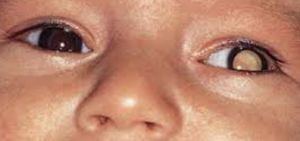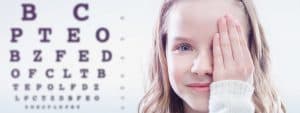Approximately 25% of the population is affected by hyperopia, but how does this affect reading?
What is hyperopia?
Hyperopia (farsightedness), occurs when the eyeball is too short from front to back or the cornea’s curve is flatter than usual. As a result, rather than focusing directly on the retina, light focuses behind it.
Hyperopia can cause difficulty focusing on close objects, impacting reading and the use of computers and digital devices.
This can also impair distance vision, depending on the severity.
What is latent hyperopia?
Hyperopia does not always cause blurry vision, as the focusing lens inside the eye can compensate by working harder.
When the focusing muscles are used to improve the eye’s focusing power, the amount of farsightedness can be ‘masked’, this is referred to as latent hyperopia.
Latent hyperopia can result in eye strain, headaches and fatigue.
Since children under the age of 10 have exceptional focusing abilities, they can fix their farsightedness in part by accommodating or focusing their own eyes. However, this frequently results in strained and fatigued eyes, as well as headaches.
Optometrists perform a cycloplegic refraction to determine the true extent of farsightedness by temporarily paralyzing the muscles that control accommodation.
This allows the eye doctor to measure the correct level of hyperopia.
What causes latent hyperopia?
Many newborns are hyperopic when they are born. Some outgrow the problem as their eyes expand and their close vision improves.
Farsightedness can also be caused by other conditions, such as eye tumors, diabetes and lens dislocations.
By the age of three, children should have a full eye examination to rule out severe hyperopia, which can lead to the development of a crossed eye (strabismus) or lazy eye (amblyopia).
SEE RELATED: 7 Common Pediatric Eye Conditions
Schedule an eye exam with an eye doctor near you to rule out the possibility of severe hyperopia.
Latent hyperopia signs and symptoms
When the focusing muscles are used to improve the eye’s focusing power, they only compensate for the farsightedness, often resulting in a range of symptoms:
- Fatigue
- Headaches
- Lazy eye (amblyopia)
- Crossed eyes (strabismus)
- Poor hand-eye coordination
- Avoidance of reading or homework
- Delayed learning
- Intermittent blurry vision
How to diagnose and treat latent hyperopia
Farsightedness should be evaluated as part of a comprehensive eye examination.
To evaluate the degree of farsightedness, an eye doctor can relax the eye’s focusing system using an eye drop known as a cycloplegic.
These eye drops will also cause the pupil to dilate.
Depending on the amount of farsightedness, the eye doctor may prescribe glasses or contact lenses to correct the hyperopia and change the way light enters the eye.
LEARN MORE: Guide to Pediatric Eye Conditions
Schedule an eye examination with an eye doctor near you, who will determine whether your or your child has hyperopia.
When the focusing muscles are used to improve the eye’s focusing power, the amount of farsightedness can be ‘masked’, this is known as latent hyperopia.
Latent hyperopia can cause blurry vision, headaches and impact the use of computers and digital devices.









